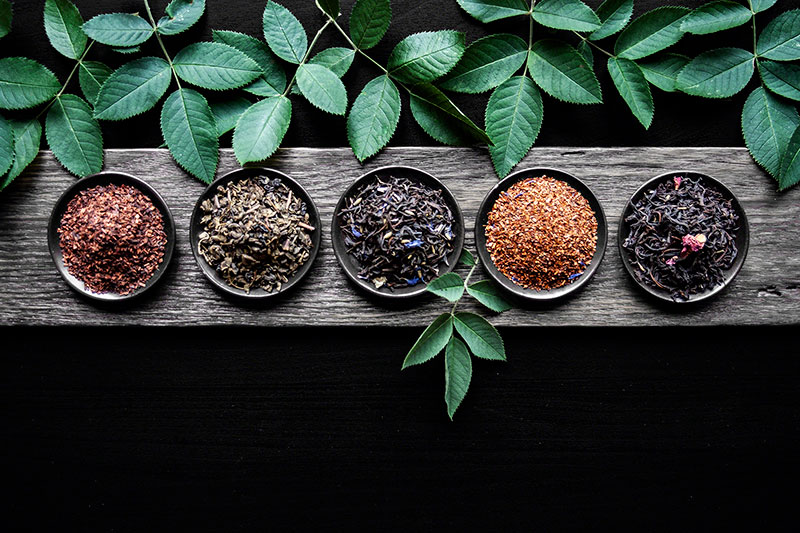Does Earl Grey Tea Have Caffeine?
Earl Grey is a tea with beauty, elegance, character and a recognizable flavor. Along with English Breakfast, it’s one of the most popular tea blends in the world – available in hundreds of shapes and colors. There is rarely a tea drinker that hasn’t heard or tried this tea. In fact, Earl Grey is one of the most common teas new tea drinkers try first. Learn about different flavors and caffeine content in this delicious tea blend.
What is Earl Grey tea?
Earl Grey is one of the most popular scented or flavored black tea blend. The exact history of this tea flavored with bergamot is unknown and there are several stories regarding the origin of Earl Grey. Earl Grey owes its name to Charles Grey, the 2nd Earl Grey, a British Prime Minister from the early 19th century. Legend says that he received this tea as a gift from China and liked it so much that he asked a tea merchant to re-invent it.[1] This first blend was made with pure citrus oil and black tea leaves. Later, Earl Grey became a generic name for any tea blend with a recognizable bergamot flavor.Earl Grey tea ingredients
Earl Grey is made by scenting or flavoring black tea leaves. The process of scenting usually means adding natural flowers and oils to the leaves during the production process, rather than adding the artificial or natural flavors later when the tea is already made, or blending them with other ingredients. The original Earl Grey had only two ingredients – strong black tea leaves and bergamot oil. Bergamot oil is an oil derived from the skin of Sicilian citrus fruit, with tart and spicy flavor. Traditional Earl Grey was scented rather than flavored, without the addition of other flowers or fruits. Today, there are hundreds of different types of Earl Grey tea, all with different additional ingredients. The most common ingredients are blue mallow flowers (cornflowers), rose petals, lavender and different citrus fruits. Strong black tea, usually Chinese or Ceylon is used as a base. Some blends are more suitable for drinking with milk than the others. Many countries are now producing their own versions of Earl Grey tea, so it’s not uncommon to see blends made with Japanese, Thai or Vietnamese black tea leaves. Unlike breakfast blends, Earl Grey quite often contains a single origin black tea. Modern Earl Grey teas can be made with other tea types too, like rooibos, green tea, and even Pu’erh tea. Although they are made from different types of tea and are different from the traditional blend, they all have one ingredient in common – bergamot oil. Some Earl Grey teas are made with real bergamot oil, while the others may contain only artificial flavoring. Every blend will have a slightly different flavor. Some may be very weak, some might even be overpowering. Tasting different blends is the best way to find the one you enjoy the most.Does Earl Grey tea have caffeine?
Every cup of Traditional Earl Grey tea will contain caffeine. The exemptions are herbal Earl Grey teas and decaf types. A research on caffeine content of commercially available teas showed that Earl Grey in general might have more caffeine than other black teas – even more than Darjeeling or breakfast teas[2]. However, it’s important to keep in mind that every blend is different. The amount of caffeine will depend on the tea used as a base, as well as many other factors.How much caffeine is in one cup of Earl Grey?
Steeping the leaves for 5 minutes rather than a minute, will extract more caffeine. But, how much exactly will depend on the blend itself. 5 minute steep may increase the caffeine content from around 50 to 100% or more. Meaning, if a one minute steep gives a cup of tea with approximately 14 mg of caffeine, 5 minutes might extract around 30 mg[3]. In general, you can expect your Earl Grey to have 30 mg of caffeine per cup, with some blends having even double the amount.What does Earl Grey tea taste like?
Although every Earl Grey will taste differently, there is one recognizable flavor that makes Earl Grey – Earl Grey - bergamot. The flavor of Earl Grey became so popular and well loved that it’s common to find cakes, chocolate and syrups with this flavor. If the Earl Grey is scented using the real bergamot oil, it will usually have a much stronger flavor. All other ingredients should only be subtle and allow bergamot to be the main note. They should always create a good balance with black tea flavor. For making an earl grey iced tea or cold brew, choose traditional stronger blends. The most popular base for herbal Earl Grey is the African red bush tea – rooibos, with a sweet and earthy flavor. However, rooibos is not the only tisane suitable for making a herbal Earl Grey. Honey bush, another south African plant with a flavor similar to rooibos creates a great base too.Best Earl Grey Tea
The best Earl Grey tea should use only natural oils and high quality loose leaf tea. Initially, tea producers were using scenting and flavoring to enhance the flavor of lower quality tea leaves. Today, scenting and flavoring is a true art, where both flavors and base tea matter. In scented tea, premium quality tea leaves will give a fuller, more enjoyable and healthier drink. Using unbroken leaves results in a more delicate cup with dozens of flavor nuances. On the other hand, broken leaves, fannings and dust will give a stronger cup.
Different Earl Grey Teas
Teas to try:
References:
[1] https://www.gov.uk/government/history/past-prime-ministers/charles-grey-2nd-earl-grey [2] https://www.pkdiet.com/pdf/Caffeine%20BrewedTeas.pdf [3] https://www.pkdiet.com/pdf/Caffeine%20BrewedTeas.pdf
More from:
SLL



Leave a comment